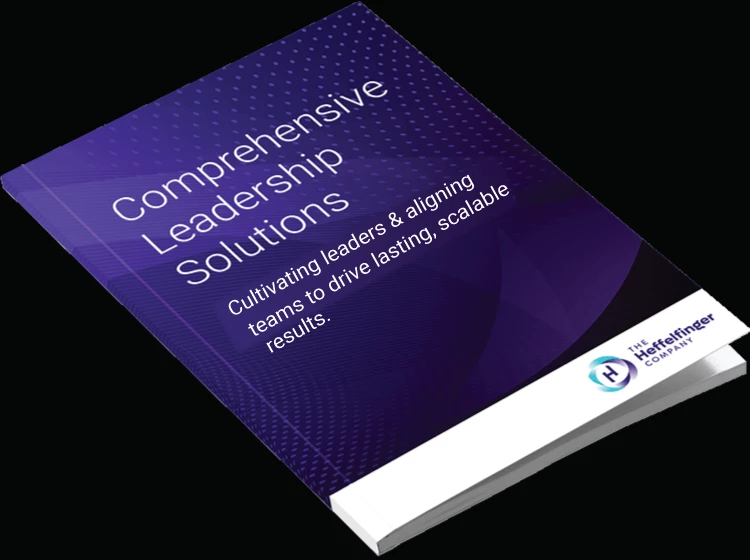“Diversity requires commitment. Achieving superior performance diversity can produce further action – most notably, a commitment to develop a culture of inclusion. People do not just need to be different, they need to be fully involved and feel their voices are heard.” –Alain Dehaze (CEO of Adecco)
Inclusive leadership is much more than a buzzword. Without inclusive leadership, employees often must overcome multiple discriminatory barriers, and companies can lose their competitive edge and harm their internal social cohesion. The reality is that many organizations struggle with creating an inclusive environment, often stemming from “unaware” leaders who have little knowledge of inclusivity and diversity issues.
Why Inclusive Leadership is Important
Inclusive leadership is important because there is a growing percentage of employees who are younger and more diverse, and they often expect their employers to prioritize diversity and inclusion. They value workplaces where they feel respected and included and are more likely to choose and stay with companies that prioritize these values. But inclusive leadership has many other benefits as well. Companies that celebrate diversity “have achieved 28% higher revenue, doubled their net income, and earned 30% higher profit margins” than their competitors.
With more leaders realizing the benefits of an inclusive workplace, they are looking for the tools they need to become inclusive leaders. As executive coaches, we work with executives and other business leaders to help them become the “aware” and active leaders they will need to be to create more inclusive workplaces.
What is Inclusive Leadership?
Inclusive leadership means leading in a way that makes everyone feel welcomed and appreciated regardless of who they are. It's about fostering an environment where differences are respected, and everyone has a fair chance to thrive. Inclusive leaders promote diversity, fairness, and acceptance within their team or organization. They actively listen to diverse viewpoints and ensure everyone can participate and succeed equally.
The 5 Areas of Inclusive Leadership
1. Prioritizing Inclusion. Organizations can prioritize inclusion by implementing a range of strategies and initiatives that foster a diverse and supportive workplace environment, starting with a genuine leadership commitment to inclusion.
2.Awareness of Intent vs impact. Understanding the distinction between intent and impact is crucial when addressing bias in the workplace. Intent refers to a person's purpose or motivation behind their actions or words, while impact refers to the effect those actions or words have on others, regardless of the intention.
3. Embracing change. Embracing change within the framework of inclusive leadership involves fostering an environment where everyone feels valued, respected, and empowered to contribute, regardless of their background or differences.
4. Bias awareness. Biases can lead to harm, resistance to change, flawed decisions, and discriminatory practices. Addressing and changing biases starts with acknowledging and reducing our own biases.
5. Inclusive language. Be mindful that certain words, such as "crazy" or "ghetto,” can make people uncomfortable. While not everyone may be bothered, these terms can be offensive to some. It's easy to find more inclusive alternatives that don't exclude anyone. For instance, opt for words like "team" instead of "guys."
Top 5 Ways to Prioritize Inclusive Leadership
There are many things that companies can do to prioritize inclusive leadership to create an inclusive organization. Here is a list of our top five:
1. Get leaders on board. Leaders in positions of power and influence must play an active role in disrupting the status quo to create an inclusive organization. Leaders should be bold in using their power to raise issues and challenge norms and behaviors that exclude.
2. Create an Equity & Justice Task Force. Centralize diversity, equity, and inclusion (DEI) efforts through a task force that has the power to create a more significant, more focused impact. Their roles and responsibilities can vary based on the organization's specific needs, but the task force should generally have the power to perform a number of tasks, such as review policies and organize training sessions and workshops for employees.
3. Increase transparency, internally and externally. Foster open and transparent communication about equity and justice efforts. Share progress, challenges, and success stories with employees regularly. Encourage feedback and input from employees to continuously improve initiatives. Let go of the fear of admitting organizational shortcomings, as it can be the first step in enacting positive change.
4. Adjust internal policy and processes as needed to support DEI. The task force can assess existing policies and processes within the organization to identify and address any biases. They can recommend changes to ensure fairness and equity in areas such as hiring, promotions, and performance evaluations.
5. Integrate equity and justice principles into the organization's core values. Every leader and employee should know that inclusivity is a priority in the organization. Ensure that inclusive values are communicated consistently and reinforced in employee communications, training, and performance evaluations.
Transforming into an Inclusive Leader
Remember: leadership is not leadership unless it’s uncomfortable. Inclusive leaders understand that leading an inclusive organization requires a commitment to continuous learning and improvement in their own understanding of inclusion and in their leadership practices. Among other things, this means getting out of their comfort zone to recognize company shortcomings and ask tough questions about their own biases.
When inclusive leadership is treated with the proactive and intentional approach to leadership that it requires, the benefits to the organization are palpable. The sense of belonging that results from an inclusive environment leads to greater innovation, engagement, and overall success for the organization and its members.
Are you ready to create an inclusive, aligned, and inspiring culture—one that great employees want to join and stay with for years? Contact us today to get started!
Warmly,
Lori and James
Lori Heffelfinger & James Jackman
Sources:
Brown, Jennifer. August 20, 2019. How to Be an Inclusive Leader: Your Role in Creating Cultures of Belonging Where Everyone Can Thrive. Oakland, CA. Berrett-Koehler Publishers; First Edition.
University of Alberta, “Bias Awareness: Leading Hybrid Teams Tip Sheet”, https://www.ualberta.ca/human-resources-health-safety-environment/media-library/managing-and-administration/hybrid-workplace/bias-awareness-tip-sheet.pdf, Accessed on 11/7/2023.







